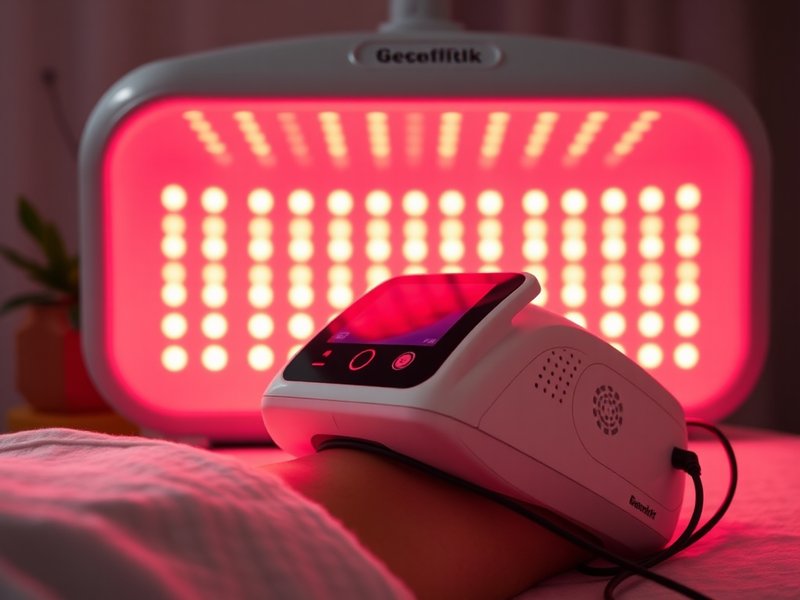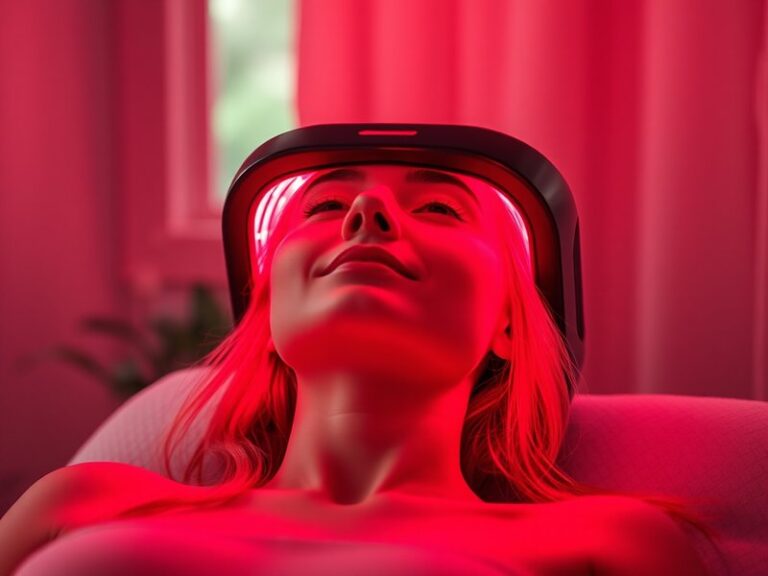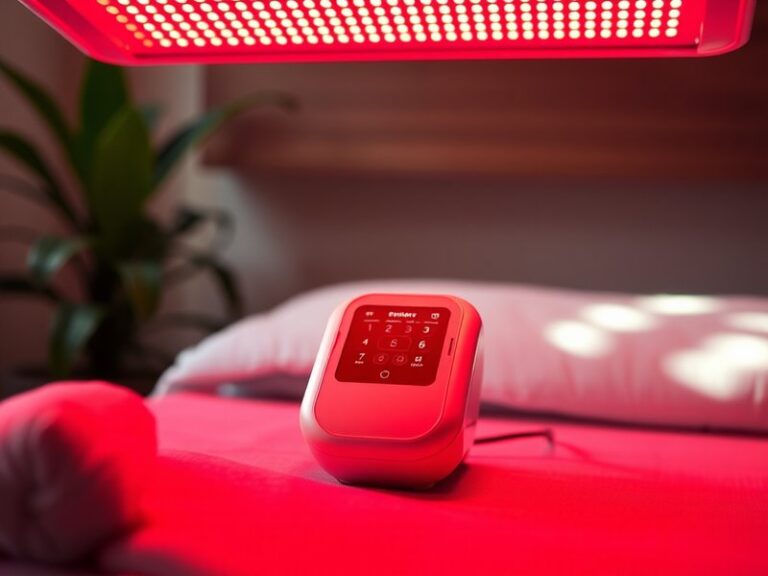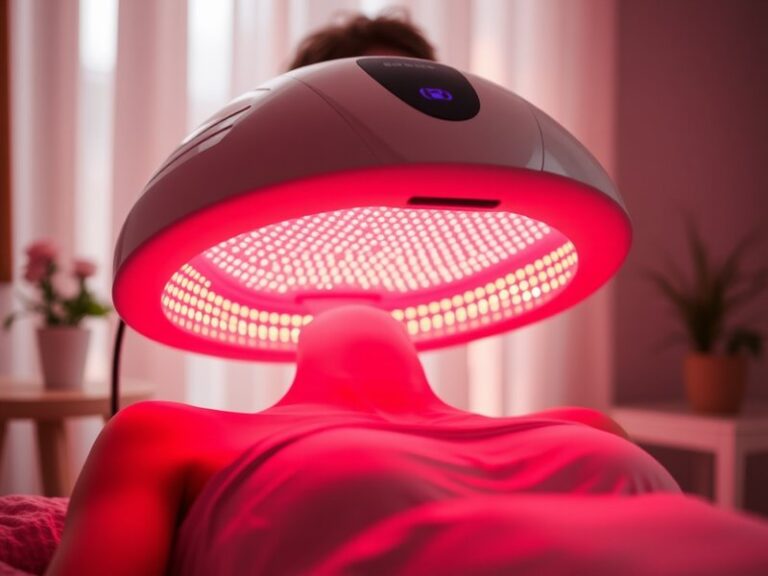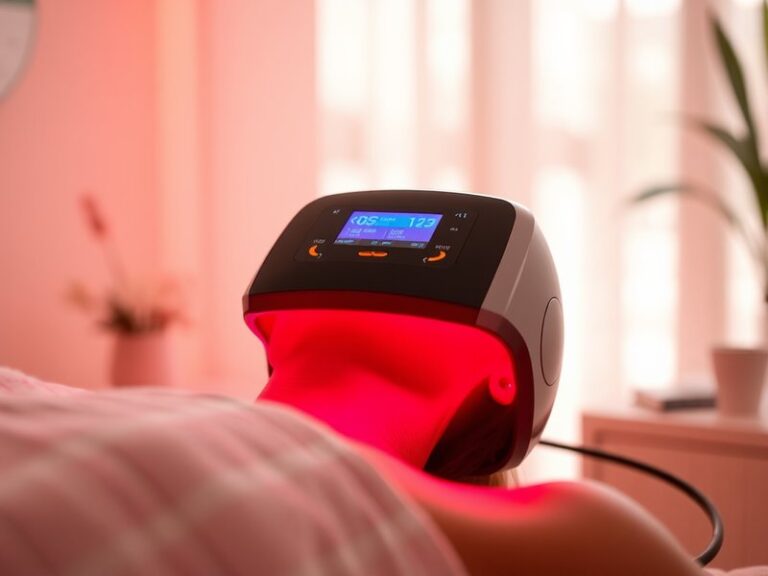Is Red Light Therapy Good For Joint Pain?
Is Red Light Therapy Good For Joint Pain?
Could red light therapy be the solution to your joint pain struggles?
This article will explore red light therapy as a potential treatment for joint pain, discussing its definition, benefits, and considerations. We’ll also evaluate how it compares to other treatment options, providing you with a comprehensive understanding of whether this innovative therapy could work for you.
Key Takeaways
- Red light therapy utilizes specific wavelengths of light to promote healing, reducing inflammation and pain in joints.
- Clinical studies suggest that red light therapy may enhance tissue repair and improve mobility in those with joint pain.
- Always consult with a healthcare provider before starting any new treatment to ensure it’s a suitable option for your individual needs.
What is Red Light Therapy?
Red light therapy (RLT) is a non-invasive treatment that uses low-level wavelengths of red light to penetrate the skin and stimulate cellular functions. Originally developed for industrial purposes like promoting plant growth, it has gained popularity in the health and wellness field over the last few decades.
RLT works by enhancing mitochondrial activity, increasing ATP production, which fuels cellular metabolism and repair. This process can help reduce inflammation and promote healing in injured or sore joints.
How Does Red Light Therapy Work?
When directed at the skin, red light can penetrate deeper than other light wavelengths. This triggers a biochemical response in cells, promoting circulation and reducing pain. Studies have indicated that RLT can effectively diminish pain levels by encouraging the body’s natural healing processes.
Common Applications of RLT
Besides joint pain relief, red light therapy is also used for various conditions, including:
- Skin rejuvenation
- Hair growth
- Muscle recovery post-exercise
What are the Benefits of Red Light Therapy?
Red light therapy offers several key benefits, especially for individuals dealing with joint pain.
Reduction of Inflammation
RLT has been shown to decrease inflammation by enhancing blood flow to the affected area. Inflammation often accompanies pain, and reducing it can significantly improve the overall comfort and mobility of individuals.
Enhanced Joint Mobility
Many users report improved joint mobility after undergoing RLT sessions. By promoting tissue repair and reducing swelling, it can help individuals regain movement that may have been limited due to persistent pain.
Low-Risk, Non-Invasive Treatment
Unlike many pharmaceuticals and surgical interventions, red light therapy is a safe, non-invasive option with minimal side effects. Many individuals can integrate it into their routine without significant risk or downtime, making it a compelling option for those hesitant about more invasive treatments.
Improved Healing Time
Some studies suggest that RLT can accelerate the body’s natural healing processes, reducing recovery time after injuries, which can be particularly beneficial for athletes or those recovering from surgery.
Is it Possible to Use Red Light Therapy at Home?
Yes, home-use red light therapy devices are available, making it convenient for individuals to incorporate RLT into their daily routines.
What are the Advantages of DIY Red Light Therapy?
Having access to RLT at home can provide numerous benefits:
Learn all about it in Benefits of Red Light Therapy for the Face
- Convenience: Allows for easy and frequent treatments without needing to visit a clinic.
- Cost-effective: While initial investments can be significant, long-term costs may be lower than repeated visits to professional clinics.
- Personalized treatment: Individuals can adjust their treatment frequency and duration according to their needs.
What are the Disadvantages of DIY Red Light Therapy?
While there are advantages, some disadvantages should be considered:
- Quality of equipment: Home devices may not offer the same efficacy as professional-grade machines.
- Potential misuse: Without proper guidance, users may not administer the therapy effectively, reducing potential benefits.
- Limited expertise: Medical conditions affecting joint pain may require professional assessment and tailored treatment plans.
What are the Things to Consider Before Starting Red Light Therapy?
To maximize the benefits of red light therapy, several factors should be considered before beginning treatment.
Consultation with a Healthcare Provider
Before starting RLT, it’s essential to consult with a healthcare professional, particularly if you have underlying health conditions or are on medications.
Choosing the Right Device
Not all red light therapy devices are created equal. It’s crucial to research and choose a device that fits your needs, especially in terms of wavelength and power output.
Creating a Consistent Routine
Consistency is key with RLT. Establishing a regular treatment schedule will typically yield the best results and aid in achieving long-term relief.
What are the Alternatives to Red Light Therapy?
There are various alternatives available for individuals seeking relief from joint pain.
Discover the complete story Does Red Light Therapy Work?
Physical Therapy
One of the most common alternatives, physical therapy involves exercises designed to strengthen the muscles around the joints, improve flexibility, and reduce pain.
Acupuncture
This traditional Chinese medicine technique involves inserting thin needles into specific points on the body to alleviate pain and promote healing. Many users report significant relief from joint pain after several sessions.
Medication
Nonsteroidal anti-inflammatory drugs (NSAIDs), prescription medications, and corticosteroid injections can effectively reduce inflammation and pain but come with their potential side effects.
Conclusion: Is it Recommended to Use Red Light Therapy?
In summary, red light therapy appears to be a promising option for those experiencing joint pain, with several advantages such as reduced inflammation, improved mobility, and a low-risk profile. However, it is essential to consult with a healthcare provider and consider individual needs and conditions before proceeding. Ultimately, RLT might be an ideal component of a multifaceted approach to pain management, enhancing overall quality of life.
Frequently Asked Questions
How long does it take to see results with red light therapy?
Results can vary based on the individual and the condition being treated, but some users notice improvements within a few weeks of consistent therapy.
Is red light therapy safe for everyone?
While generally safe, it is essential for individuals with specific medical conditions (like skin disorders or light sensitivity) to consult with a healthcare provider before beginning treatment.
How often should I undergo red light therapy?
For optimal results, many practitioners recommend sessions 2-3 times a week, but the frequency can vary based on individual response and the severity of the condition.
Can red light therapy be used in conjunction with other treatments?
Yes, RLT can often be safely combined with other therapies, such as physical therapy or medication, but always discuss this with a healthcare provider to ensure compatibility.
What should I look for in a red light therapy device?
When selecting a device, consider factors such as the wavelength, power output, size, and user reviews. Higher quality devices tend to provide better results.
